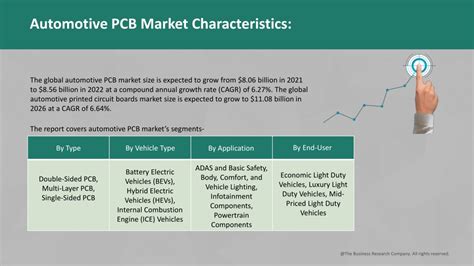Introduction to the PCB Industry in China
The Printed Circuit Board (PCB) industry is a crucial component of the electronics manufacturing sector, and China has emerged as a global leader in PCB production. PCBs are essential for connecting electronic components in various devices, ranging from smartphones and computers to automotive systems and industrial equipment. This article provides an in-depth analysis of the current state of the China PCB Board industry and presents forecasts for its future growth and development.
Market Size and Growth Trends
Current Market Size
In 2020, the China PCB industry achieved a total output value of approximately 327.4 billion yuan (US$ 50.7 billion), accounting for over 50% of the global PCB market share. Despite the challenges posed by the COVID-19 pandemic, the industry demonstrated resilience and maintained its dominant position in the world market.
Historical Growth Trends
The China PCB industry has experienced significant growth over the past decade. From 2010 to 2020, the industry’s output value increased from 120.6 billion yuan (US$ 18.7 billion) to 327.4 billion yuan (US$ 50.7 billion), representing a compound annual growth rate (CAGR) of 10.5%.
Forecasted Growth
Looking ahead, the China PCB industry is expected to maintain steady growth. According to industry experts, the market size is projected to reach 452.7 billion yuan (US$ 70.1 billion) by 2025, with a CAGR of 6.7% during the forecast period (2021-2025).
| Year | Output Value (Billion Yuan) | Growth Rate |
|---|---|---|
| 2020 | 327.4 | – |
| 2021 | 348.1 | 6.3% |
| 2022 | 371.4 | 6.7% |
| 2023 | 396.3 | 6.7% |
| 2024 | 422.9 | 6.7% |
| 2025 | 452.7 | 7.0% |
Key Drivers and Challenges
Drivers
- Growing demand for consumer electronics
- 5G technology adoption and infrastructure development
- Increasing automotive electronics applications
- Expanding IoT and smart device markets
- Government support and favorable policies
Challenges
- Rising labor costs in China
- Environmental regulations and sustainability concerns
- Technological advancements and the need for continuous innovation
- Competition from other Asian countries (e.g., Vietnam, India)
- Geopolitical tensions and trade disputes

Market Segmentation
By Product Type
- Rigid PCBs
- Flexible PCBs
- Rigid-flex PCBs
- Others (e.g., HDI, substrates)
By End-Use Industry
- Consumer Electronics
- Automotive
- Telecommunications
- Industrial
- Aerospace and Defense
- Medical
- Others (e.g., education, energy)
Competitive Landscape
The China PCB industry is highly fragmented, with numerous domestic and international players competing for market share. Some of the key players in the market include:
- Zhen Ding Technology Holding Limited (ZDT)
- Nippon Mektron
- Unimicron
- Tripod Technology Corporation
- Compeq Manufacturing Co., Ltd.
- Shennan Circuits Co., Ltd.
- China Circuit Technology Corporation (CCT)
- Sichuan Yidun Electronic Co., Ltd.
- Shenzhen Kinwong Electronic Co., Ltd.
- Wus Printed Circuit Co., Ltd.
These companies are focusing on expanding their production capacities, investing in research and development, and forming strategic partnerships to strengthen their market position.
Future Outlook and Recommendations
The China PCB industry is expected to maintain its global leadership position in the coming years, driven by the growing demand for electronic devices and the adoption of advanced technologies. However, to ensure sustainable growth and competitiveness, the industry must address several key challenges and opportunities:
- Embrace Industry 4.0 and smart manufacturing technologies to improve efficiency and product quality.
- Invest in research and development to innovate and develop high-value-added products.
- Foster collaboration between industry players, academia, and government to promote technological advancement and knowledge sharing.
- Prioritize environmental sustainability and adopt eco-friendly practices to meet increasing regulatory requirements and customer demands.
- Diversify supply chains and explore opportunities in emerging markets to mitigate geopolitical risks and overdependence on specific regions.
By addressing these factors, the China PCB industry can continue to thrive and maintain its competitive edge in the global market.
Frequently Asked Questions (FAQ)
1. What is the current market size of the China PCB industry?
As of 2020, the China PCB industry achieved a total output value of approximately 327.4 billion yuan (US$ 50.7 billion), accounting for over 50% of the global PCB market share.
2. What is the projected growth rate of the China PCB industry during the forecast period (2021-2025)?
The China PCB industry is expected to grow at a compound annual growth rate (CAGR) of 6.7% during the forecast period (2021-2025), reaching a market size of 452.7 billion yuan (US$ 70.1 billion) by 2025.
3. What are the key drivers of growth in the China PCB industry?
The key drivers of growth in the China PCB industry include the growing demand for consumer electronics, 5G technology adoption and infrastructure development, increasing automotive electronics applications, expanding IoT and smart device markets, and government support and favorable policies.
4. What are the major challenges faced by the China PCB industry?
The China PCB industry faces several challenges, including rising labor costs, environmental regulations and sustainability concerns, technological advancements and the need for continuous innovation, competition from other Asian countries, and geopolitical tensions and trade disputes.
5. What strategies can the China PCB industry adopt to ensure sustainable growth and competitiveness?
To ensure sustainable growth and competitiveness, the China PCB industry can embrace Industry 4.0 and smart manufacturing technologies, invest in research and development, foster collaboration between industry players, prioritize environmental sustainability, and diversify supply chains and explore opportunities in emerging markets.
Conclusion
The China PCB industry has demonstrated remarkable growth and resilience, solidifying its position as a global leader in PCB production. With a projected CAGR of 6.7% during the forecast period (2021-2025), the industry is poised for continued success. However, to capitalize on the opportunities and overcome the challenges, industry players must adopt innovative strategies, prioritize sustainability, and foster collaboration. By doing so, the China PCB industry can maintain its competitive edge and drive the future of the global electronics manufacturing sector.




